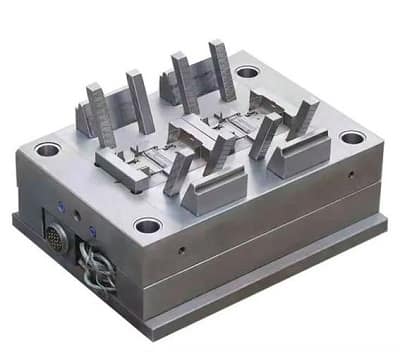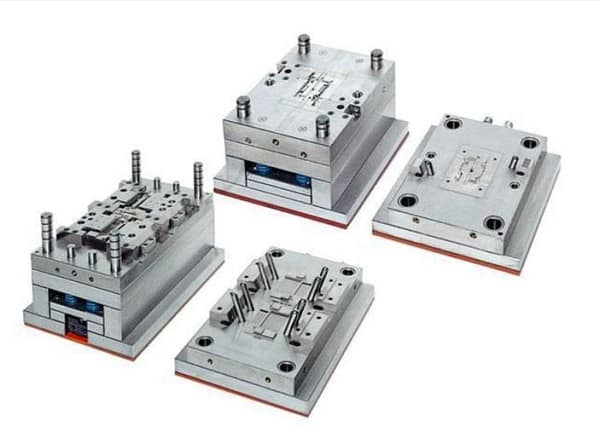Understanding Rapid Prototyping
Rapid Prototyping (RP) encompasses a variety of technologies used to quickly create physical models from digital designs. This process is essential for businesses seeking to rapidly turn their ideas into testable prototypes, enabling them to iterate faster and refine their concepts with minimal risk. With the help of rapid prototyping, businesses can stay competitive in today’s fast-paced markets by significantly reducing development time and costs.
The impact of prototypage rapide extends across industries, including automotive, healthcare, consumer electronics, and more. As the demand for speed, customization, and quality increases, rapid prototyping has become a critical tool in transforming concepts into reality.
Why Rapid Prototyping is Revolutionizing Modern Manufacturing
Speed: Accelerating Time to Market
One of the standout benefits of rapid prototyping is its unmatched speed. Unlike traditional methods that could take weeks or even months to develop a prototype, rapid prototyping can produce a working model in a matter of hours or days. This drastic reduction in production time allows businesses to test, modify, and perfect designs faster than ever before, providing a crucial advantage in industries where time-to-market is vital.
Cost Efficiency: Reducing Development Costs
The financial advantages of rapid prototyping are significant. Traditional prototyping methods often involve expensive molds and tooling, as well as labor-intensive processes. With rapid prototyping, companies can bypass these high costs, opting for digital fabrication methods like 3D printing, which offer substantial cost savings, especially during the early stages of product development.

By eliminating the need for expensive materials and production runs, rapid prototyping helps businesses stay within budget while speeding up the development process.
Design Flexibility: Encouraging Innovation
In traditional manufacturing, making changes to a prototype can be cumbersome and costly. With rapid prototyping, however, designers can quickly alter their models and experiment with different materials, forms, and features. This flexibility encourages innovation, allowing companies to test a variety of design options without worrying about additional costs or delays.
Whether for functional adjustments or exploring new ideas, rapid prototyping enables a level of creative freedom that traditional methods simply cannot match.
Enhancing Product Quality Through Early Testing
With rapid prototyping, manufacturers can create functional prototypes that closely resemble the final product, enabling early-stage testing of form, fit, and function. This early validation helps identify flaws, weaknesses, and areas for improvement before committing to full-scale production. As a result, businesses can refine their products, ensuring they meet performance, quality, and customer satisfaction standards.
Testing and refining designs early in the process not only improves product quality but also reduces the likelihood of costly revisions later in the production cycle.
Personalization: Meeting Customer Demands
The ability to customize products is more important than ever. Rapid prototyping allows manufacturers to easily create customized products, whether for individual consumers or specific industries. For instance, customized medical devices tailored to a patient’s unique anatomy or personalized consumer goods can be produced with minimal cost and time.
This ability to offer personalized products provides a competitive edge, catering to niche markets and increasing customer loyalty.
Key Industries Benefiting from Rapid Prototyping
Healthcare: Revolutionizing Medical Device Design
In the healthcare industry, rapid prototyping has transformed the development of medical devices, implants, and prosthetics. By creating customized prototypes based on 3D scans, doctors can now develop highly personalized solutions for their patients, ensuring better fit and performance. This technology is also used to create surgical guides and anatomical models, allowing surgeons to practice complex procedures before performing them.
Automotive: Enhancing Vehicle Design and Performance
The automotive industry heavily relies on rapid prototyping for designing and testing vehicle components, including engine parts, interior designs, and safety features. Automakers use this technology to streamline the design process, test materials, and evaluate different configurations, all while reducing the risk of costly mistakes in the final production phase.
By using rapid prototyping, automakers can innovate faster, produce high-quality vehicles, and meet stringent regulatory requirements more efficiently.
Consumer Electronics: Fast-Tracking Innovation
In the fast-moving world of consumer electronics, the ability to quickly develop and test prototypes is essential. Whether it’s for smartphones, wearables, or smart home devices, rapid prototyping enables companies to bring new products to market faster, meeting consumer demand for the latest technology. From concept to final design, this technology allows engineers to test functionality, evaluate user experience, and make necessary changes before mass production begins.
Aerospace: Precision and Speed in Critical Parts Manufacturing
Aerospace companies rely on rapid prototyping to produce highly complex and precise components for aircraft, spacecraft, and military technology. The ability to create prototypes with fine tolerances and durable materials helps aerospace manufacturers ensure that parts meet safety and performance standards. This process also accelerates the development cycle, allowing for faster testing and validation of new designs.
Looking Ahead: The Future of Rapid Prototyping
The future of rapid prototyping is promising, with constant advancements in materials, techniques, and automation. The integration of new materials, such as biocompatible substances, metals, and even composites, is expanding the scope of rapid prototyping, making it even more useful across a wider range of industries.
Additionally, the rise of AI and machine learning in design and production processes is streamlining rapid prototyping, enabling smarter, faster, and more accurate prototyping workflows. These advancements will only further enhance the role of rapid prototyping in accelerating product development and fostering innovation.
Embracing the Benefits of Rapid Prototyping
In today’s competitive market, the ability to quickly transform an idea into a tangible prototype is more valuable than ever. Rapid prototyping is an essential tool for businesses looking to reduce development costs, accelerate time to market, improve product quality, and foster innovation. Its impact is felt across industries from healthcare to automotive, consumer electronics to aerospace.
As technology continues to advance, the potential of rapid prototyping will only grow. By embracing this modern approach to product development, companies can stay ahead of the curve, drive innovation, and ensure their products meet the ever-changing demands of the marketplace. For businesses committed to speed, efficiency, and quality, rapid prototyping is a vital tool for success in the modern manufacturing landscape.
